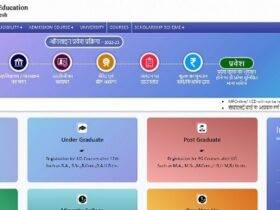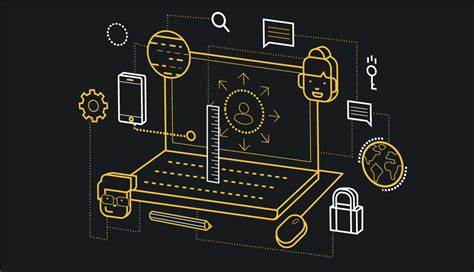Are you a startup owner struggling to get your product or service noticed in today’s market? Have you considered investing in UX design to improve user experience and increase customer satisfaction? In this blog post, we’ll explore why UX design is crucial for startups and provide expert tips on how to get it right. Whether you’re launching a new app or revamping your website, read on to discover how an effective UX design can make all the difference for your business success.
Introduction: What is UX Design?
UX design is all about creating a great user experience. It’s the process of designing a product or service that is easy to use, enjoyable, and valuable to the customer.
A good UX designer will take into account the customer’s needs and wants, as well as the business goals of the project, in order to create a design that meets both sets of requirements. In order to be successful, a UX designer must have strong problem-solving skills and be able to think creatively.
While there is no one right way to do UX design, there are some common principles that all good designers follow. These include things like making sure the interface is easy to use, paying attention to detail, and creating a consistent experience across all devices and platforms.
If you’re thinking about starting a business, or if you already have a startup up and running, it’s important to consider UX design from the beginning. A good user experience can make the difference between success and failure for your business.
Why UX Design Matters for Startups
There are many reasons why User Experience (UX) design matters for startups. A great UX can help you acquire and retain users, while a poor UX can deter them. It can also impact your bottom line; good UX design has been shown to increase conversion rates and ROI. In addition, studies have shown that employees who are happy with their company’s UX are more productive.
User experience is important because it encompasses everything that a user experiences when they interact with your product or service. This includes how they feel about using it, how easy or difficult it is to use, and whether or not they find it valuable. A great user experience can make the difference between a user becoming a lifelong customer or abandoning your product altogether.
That’s why it’s so important for startups to focus on UX early on. By building a strong foundation of good UX design, you’ll be setting yourself up for success in the long run.
Benefits of a Good UX Design for Startups
The benefits of a good UX design for startups are many and varied. Perhaps the most obvious benefit is that it can help you to create a great user experience for your customers or clients, which in turn can lead to increased sales and conversions. But there are other benefits too, such as:
1. Increased Efficiency
2. Improved Customer Retention
3. Increased Customer Satisfaction
4. Positive Brand Associations
5. Reduced Development Costs
Common Mistakes when Implementing UX Design
There are a number of common mistakes that companies make when implementing UX design. One of the most common is failing to understand the user’s needs and goals. Another common mistake is designing for the wrong platform, or not taking into account the different devices that users will be using to access your product or service.
Yet another mistake is treating UX as an afterthought, something that can be added on later once the product or service has been built. This is a mistake because UX should be integrated into every stage of the development process, from conception to launch. Finally, a common but avoidable mistake is failing to test the user experience with real users before launch. This can lead to serious problems down the line, so it’s important to get feedback from users early and often during the development process.
Best Practices in Developing a User Interface
User interface (UI) design is critical for startups. A great UI can make the difference between a successful product and one that fails. Conversely, a poor UI can doom even the best products.
That’s why it’s important to understand best practices in UI design. By following these guidelines, you can increase the chances of success for your startup:
1. Keep it simple
When it comes to UI design, less is almost always more. A complex UI will only frustrate users and cause them to abandon your product. Start by stripping away all unnecessary elements from your design. Then, slowly add back in only the absolutely essential elements.
2. Make it intuitive
Users should be able to figure out how to use your product without requiring any instructions. That means your UI must be intuitive and easy to use. Consider using familiar conventions such as hamburger menus and search boxes to make your product more intuitive.
3. Use whitespace wisely
Whitespace doesn’t have to be white—it just refers to empty space on a page or screen. judicious use of whitespace can actually make your UI more effective by helping users focus on specific content and areas of interest. Too much whitespace, however, can make a page seem unfinished or unimportant. Use whitespace sparingly but deliberately to guide users through your interface and highlight key content areas.
Planning and Conducting Usability Tests
Usability testing is a vital part of the UX design process for startups. It allows you to test your product or service with real users to get feedback on its user-friendliness and effectiveness. This feedback can then be used to make improvements to the design before launch.
There are many different ways to conduct usability tests, but all require careful planning in order to get the most informative results. First, you need to decide what kind of test you want to conduct: moderated or unmoderated, remote or in-person. Moderated tests are conducted with the help of a facilitator, who guides users through tasks and probes for feedback; unmoderated tests are conducted without any facilitator, using pre-written instructions instead. Remote tests can be conducted online using screen-sharing software, while in-person tests require participants to come to a specified location.
Once you’ve decided on the type of test you want to conduct, you need to develop a script that outlines the tasks participants will need to complete during the test. This script should be piloted with a small group of users beforehand to ensure that it is clear and concise. Finally, you need to recruit participants for your usability test. This can be done through online panels or by contacting people directly.
Once your participants have been recruited, it’s time to conduct the usability test itself. During the test, participants will attempt to complete the tasks outlined in your script while being observed by either yourself
Conclusion: The Benefits of Investing in Good UX Design
When it comes to startup success, a lot rides on the user experience (UX) of your product. If you want people to use and love your product, you have to design it in a way that’s easy, intuitive, and satisfying for them. Luckily, investing in good UX design can help you create a product that people will love. Here are just a few of the benefits you can enjoy by investing in good UX design:
1. Increased conversions and sales.
2. Better customer retention and satisfaction.
3. Improved ROI from your marketing efforts.
4. A competitive edge over other startups with inferior UX design.
So if you’re serious about making your startup a success, don’t skimp on UX design – it could be the difference between failure and success.






























Leave a Reply